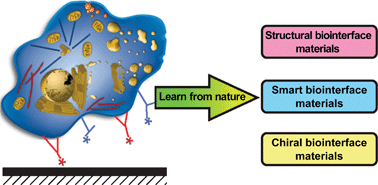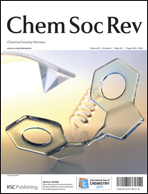Controlling the interfacial chemical and physical properties, and thus modulating the behaviours of cells and biomolecules on material surfaces, form an important foundation for the development of high-performance biomaterials and devices. Biological systems in nature exhibit unique features in this aspect. The first one is that the superior properties of natural biomaterials are normally not determined by their bulk properties, but more related to the multi-scale micro- and nanostructures on the surface; the second is that biological systems usually utilize highly specific weak interactions (e.g.hydrogen bonding interaction, hydrophobic interaction, etc.) to solve the problems of biomolecule interactions; the third is that the biomolecules in nature are often chiral molecules and show high preference for one specific enantiomorphous configuration, suggesting a distinctive chiral recognition mechanism in biological systems. These features bring much inspiration to design novel biointerface materials with special functionalities, e.g. structural biointerface materials, smart biointerface materials and chiral biointerface materials. The purpose of this critical review is to give a brief introduction of recent advances in these aspects (90 references).

You have access to this article
 Please wait while we load your content...
Something went wrong. Try again?
Please wait while we load your content...
Something went wrong. Try again?


 Please wait while we load your content...
Please wait while we load your content...